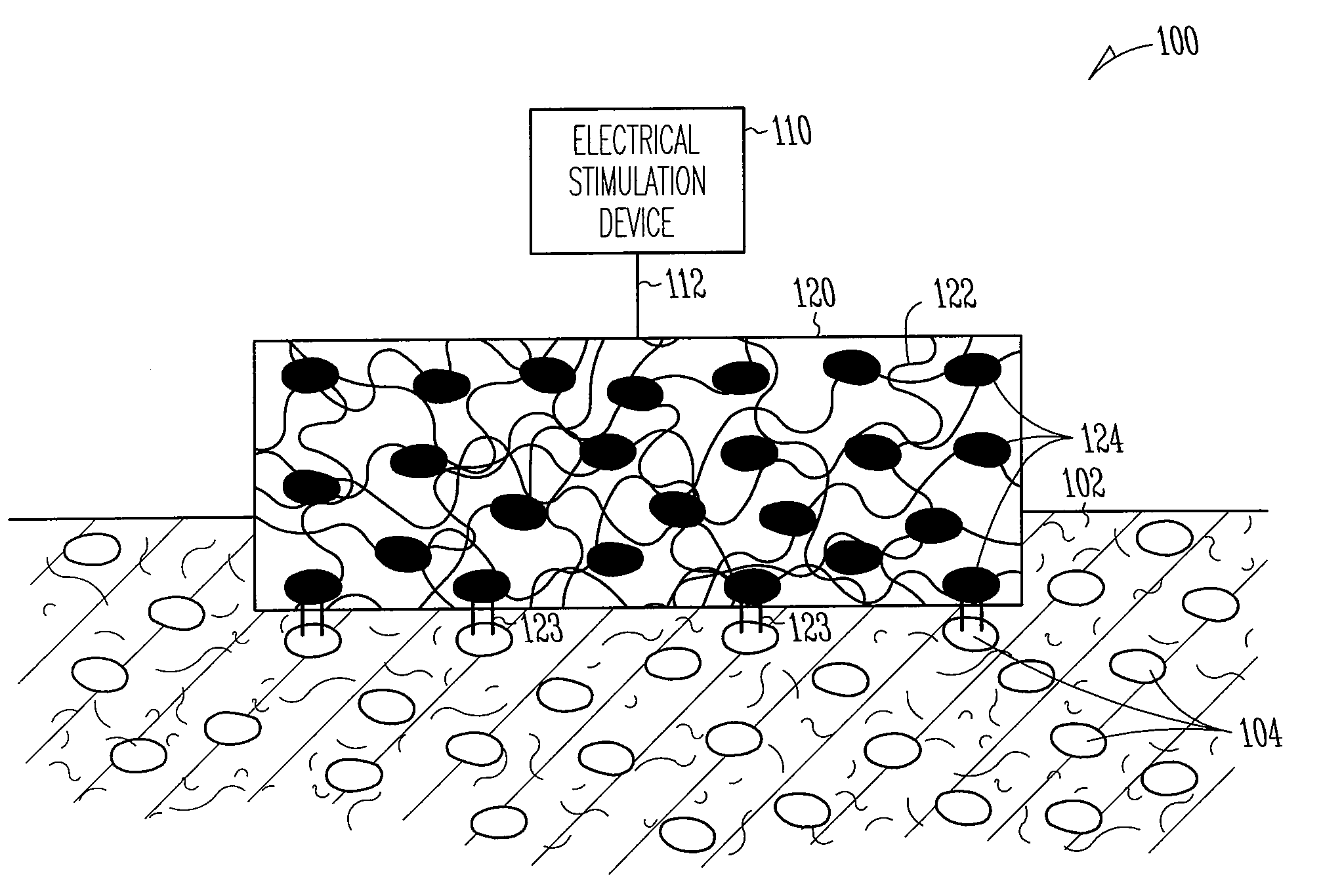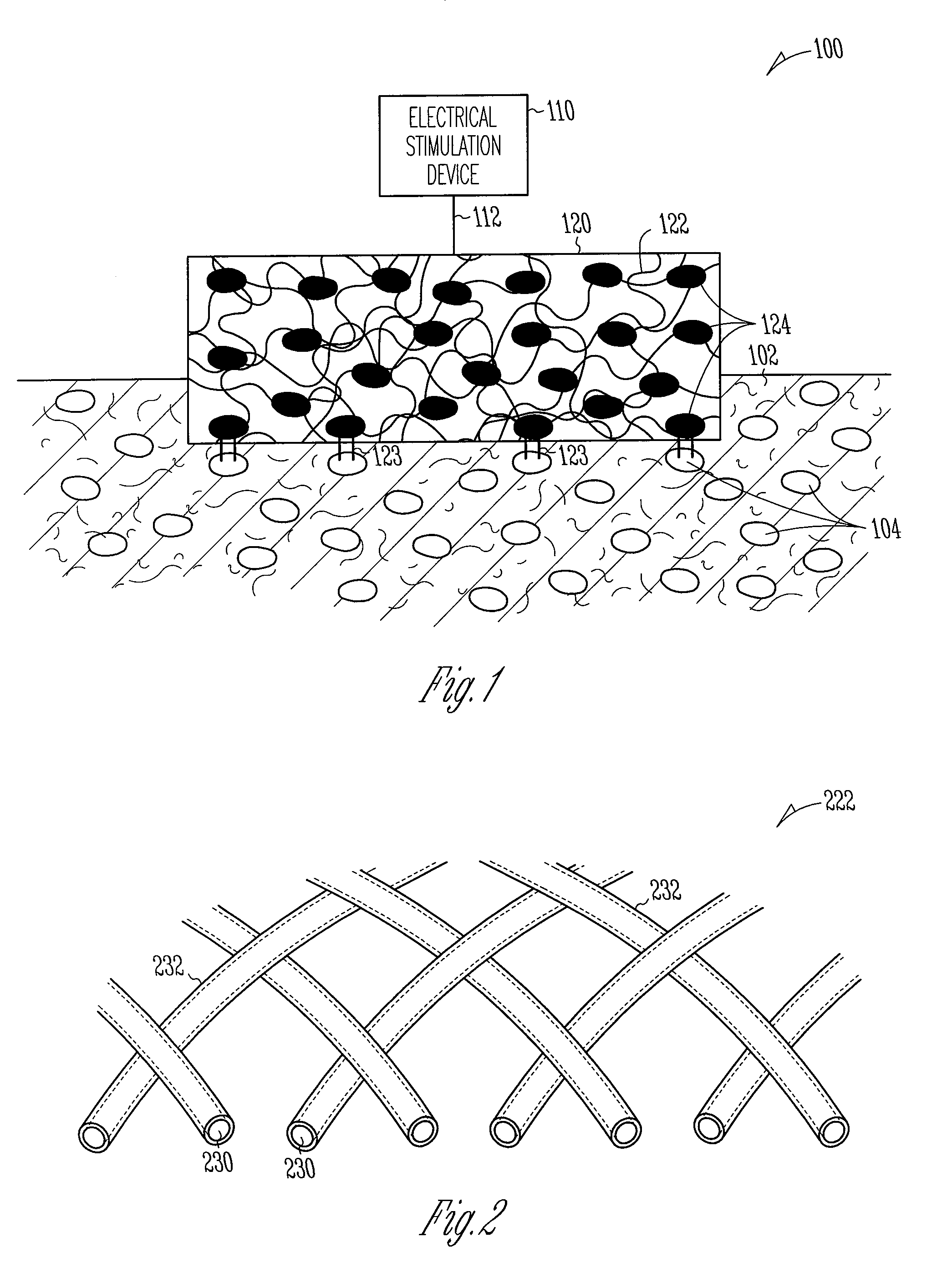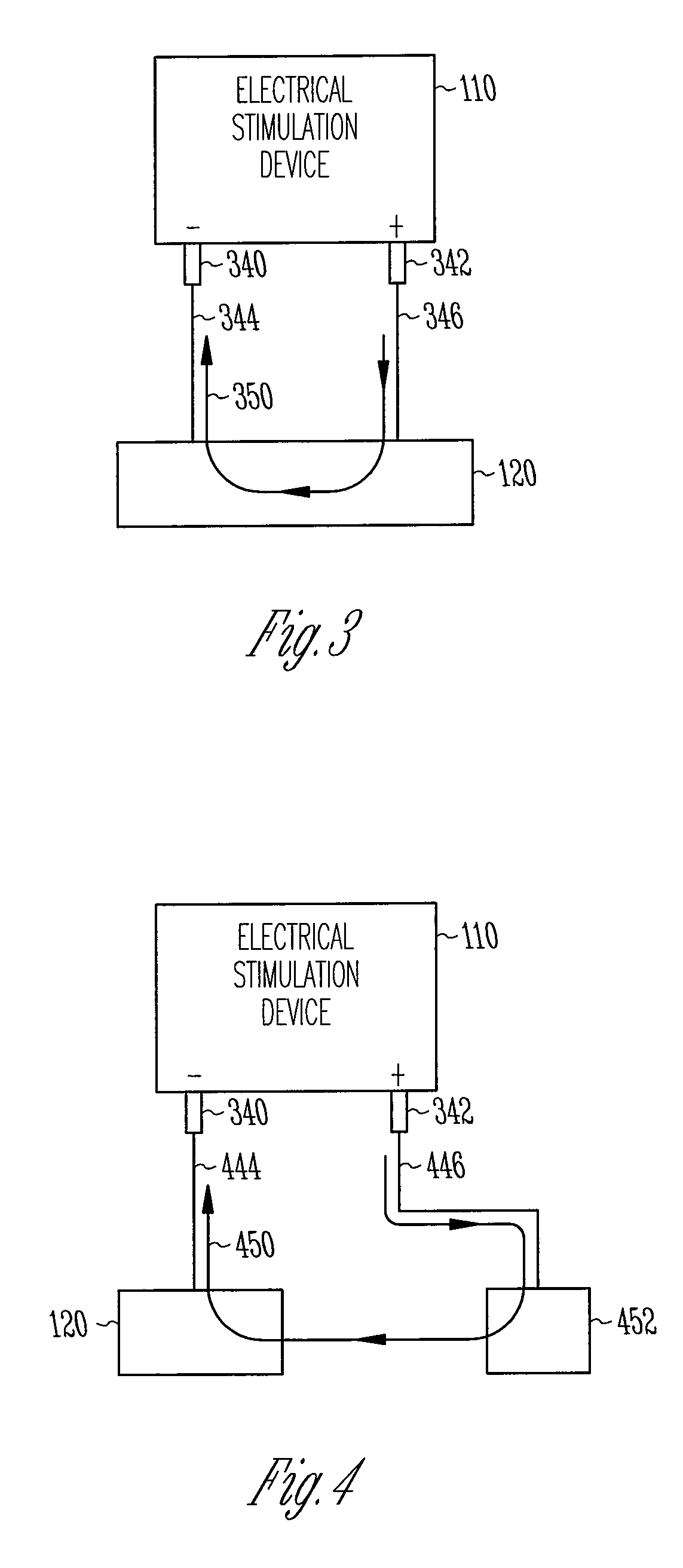Electrically conducting scaffolds for cell-based pacing
- Summary
- Abstract
- Description
- Claims
- Application Information
AI Technical Summary
Benefits of technology
Problems solved by technology
Method used
Image
Examples
Embodiment Construction
Definitions
[0022]The term “treatment” is used herein to characterize a method that is aimed at (1) delaying or preventing the onset of a medical condition; or (2) slowing down or stopping the progression, aggravation, or deterioration of the symptoms of the condition; or (3) bringing about ameliorations of the symptoms of the condition; and / or (4) curing the condition. The treatment may be administered prior to the onset of the disease, for a prophylactic or preventive action. It may also be administered after initiation of the disease, for a therapeutic action.
[0023]The terms “individual,”“recipient” and “patient” are used herein interchangeably. They refer to a human or another mammal, that suffers from tissue deficiency, damage or loss. In one embodiment, the deficiency, damage and / or loss affect(s) a native tissue that contains electrically excitable cells and is subject to electrical stimulation in vivo.
[0024]By “mammal” is meant any member of the class Mammalia including, with...
PUM
| Property | Measurement | Unit |
|---|---|---|
| Action potential | aaaaa | aaaaa |
| Electrical conductivity | aaaaa | aaaaa |
| Current | aaaaa | aaaaa |
Abstract
Description
Claims
Application Information
 Login to View More
Login to View More - R&D
- Intellectual Property
- Life Sciences
- Materials
- Tech Scout
- Unparalleled Data Quality
- Higher Quality Content
- 60% Fewer Hallucinations
Browse by: Latest US Patents, China's latest patents, Technical Efficacy Thesaurus, Application Domain, Technology Topic, Popular Technical Reports.
© 2025 PatSnap. All rights reserved.Legal|Privacy policy|Modern Slavery Act Transparency Statement|Sitemap|About US| Contact US: help@patsnap.com



